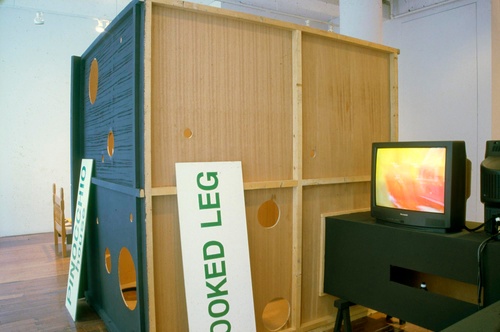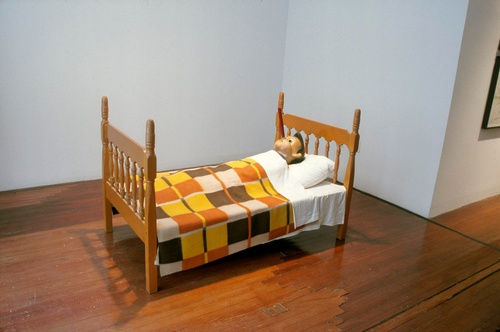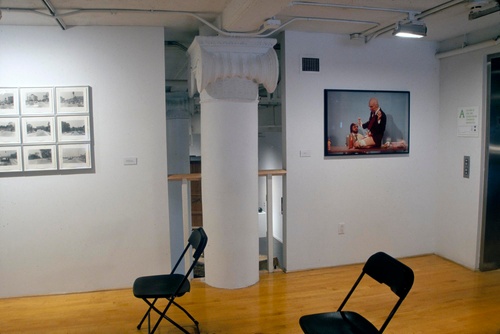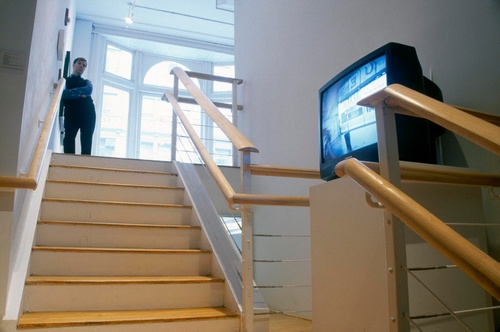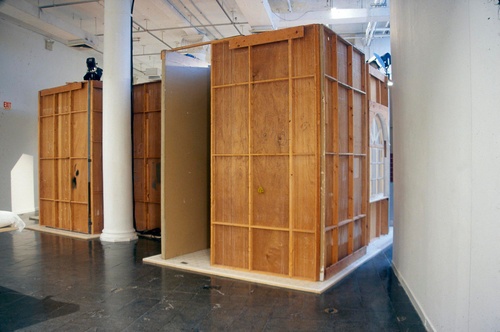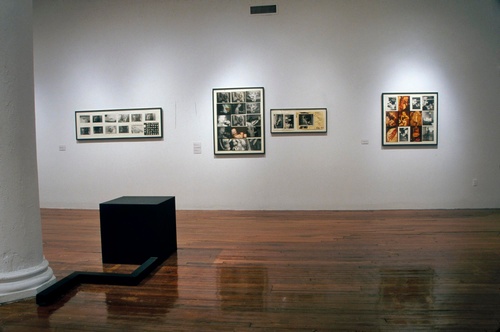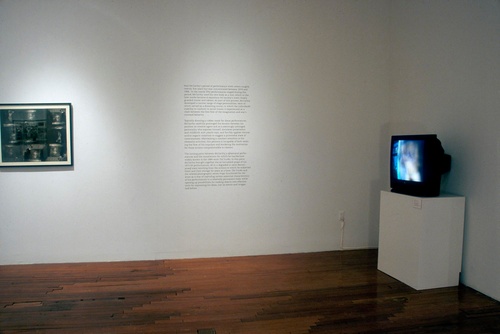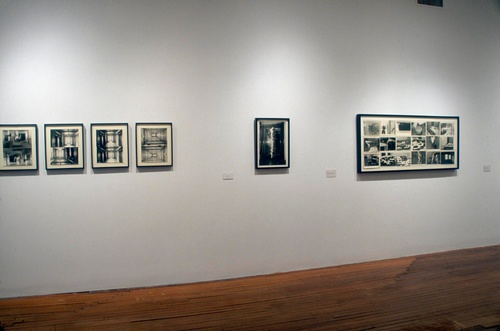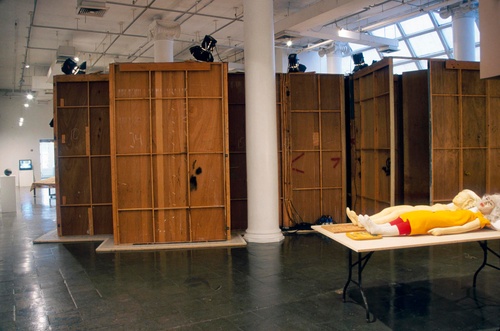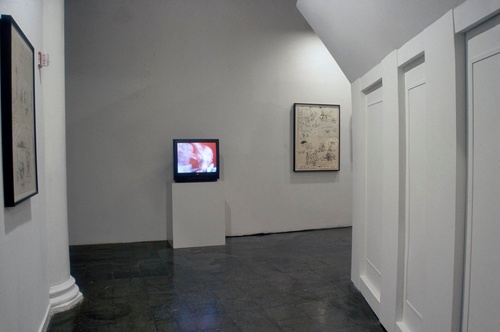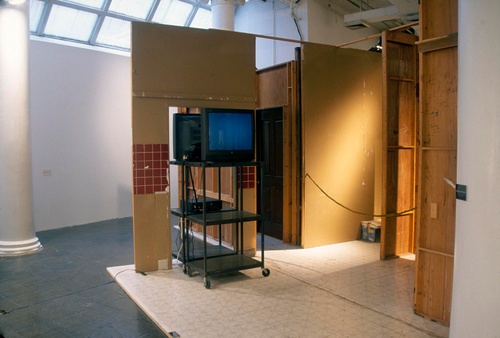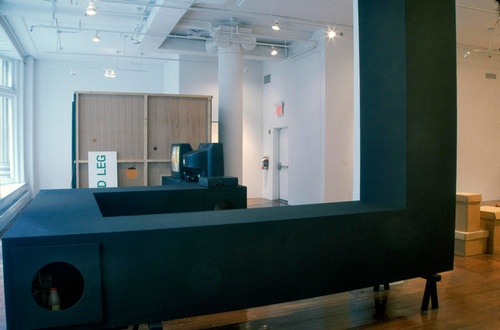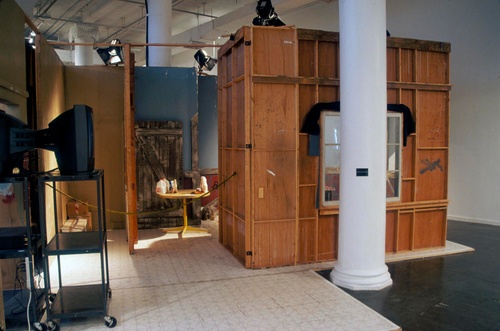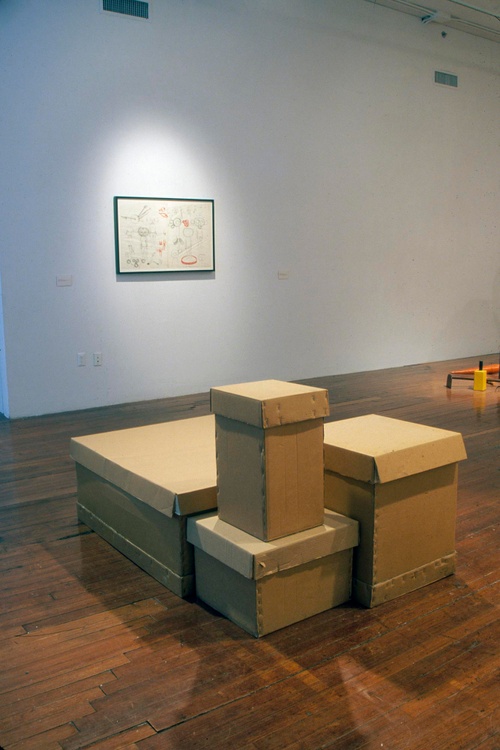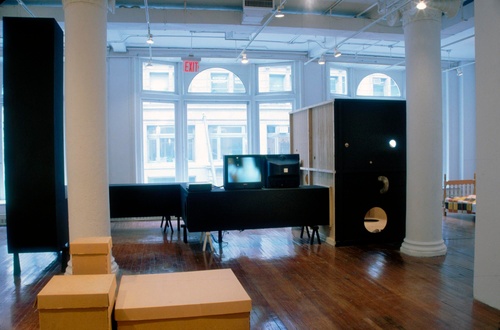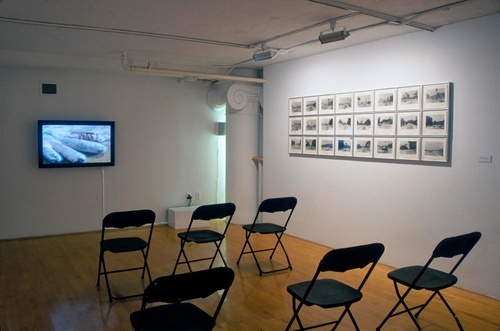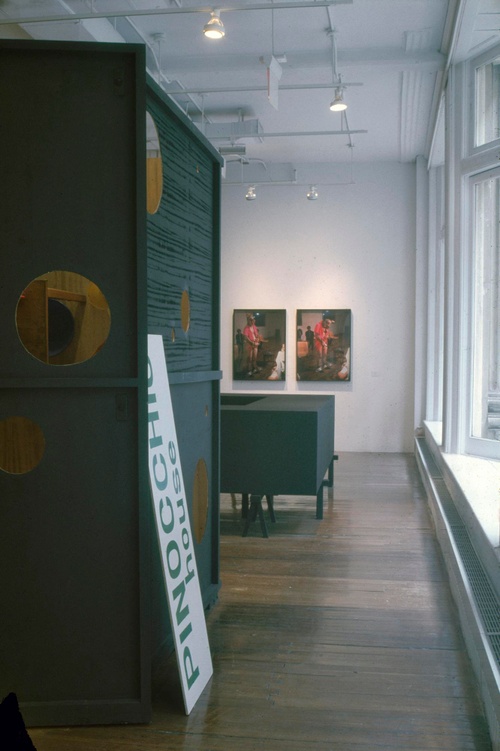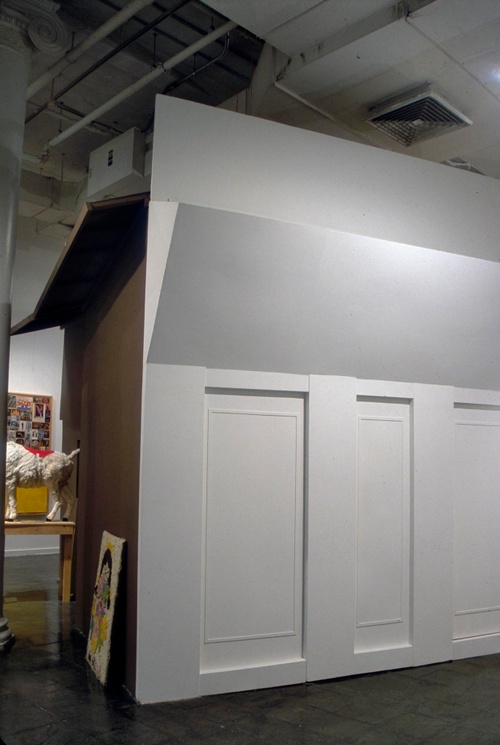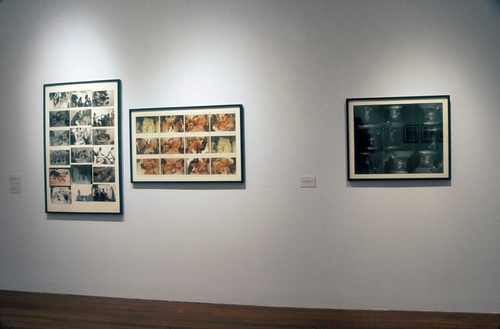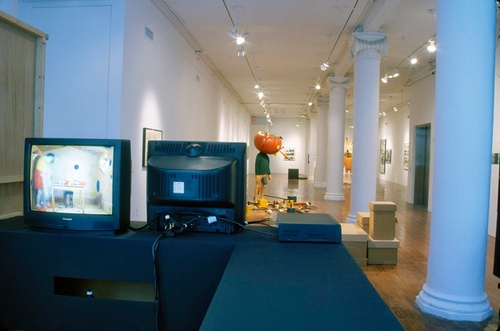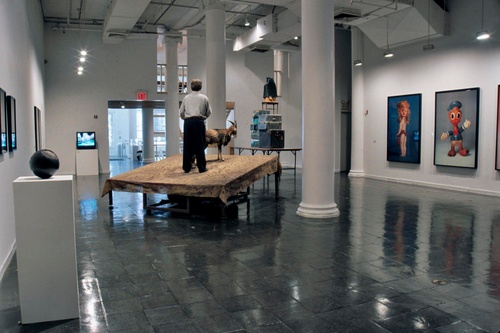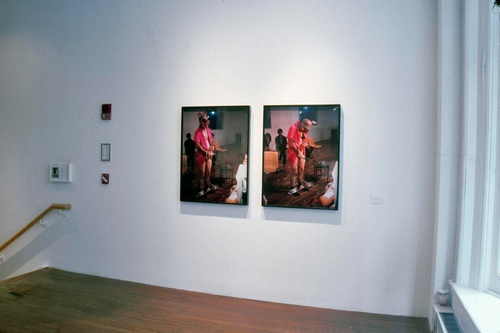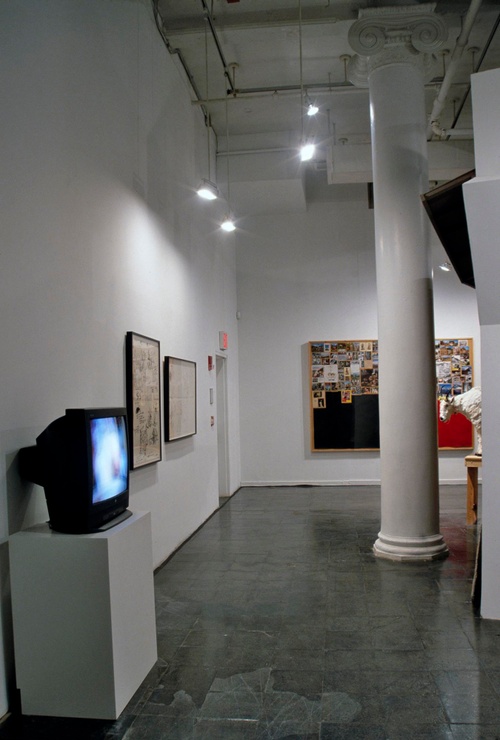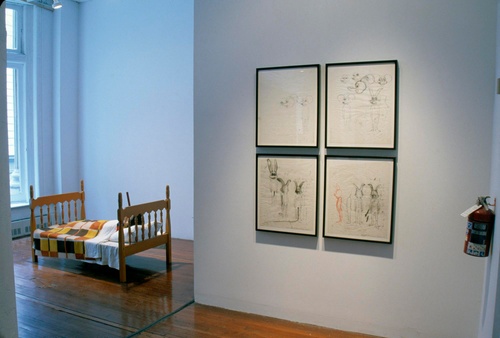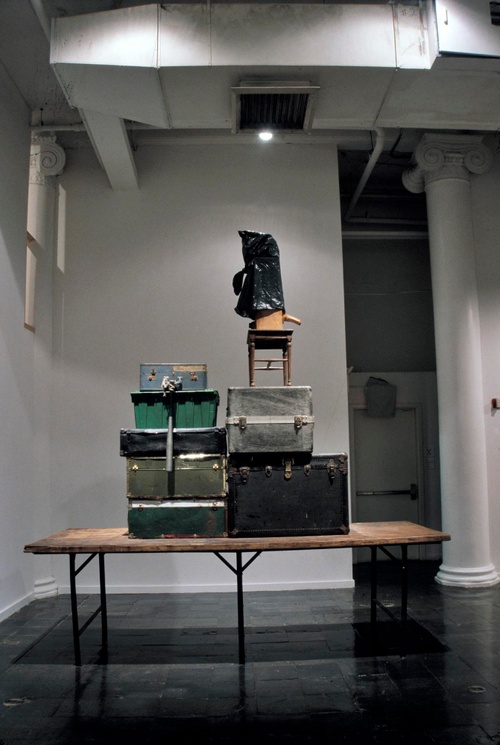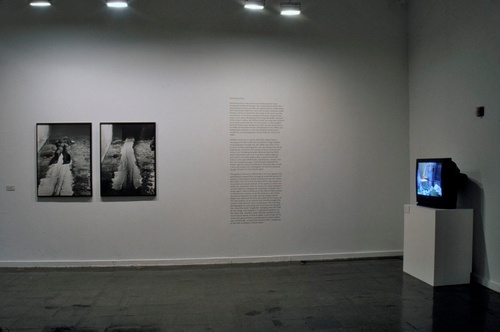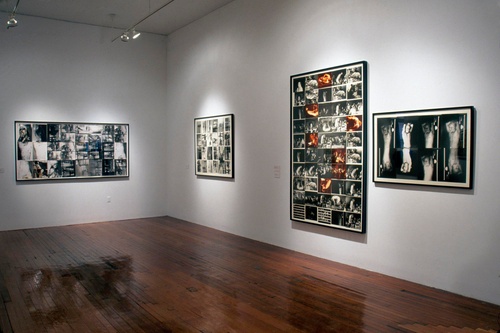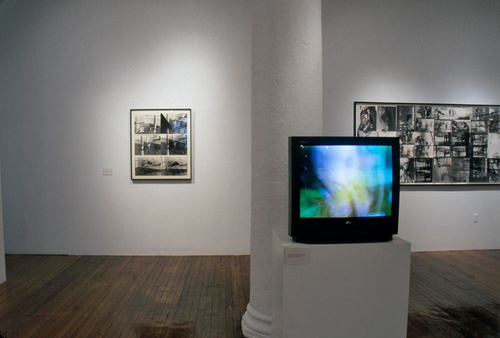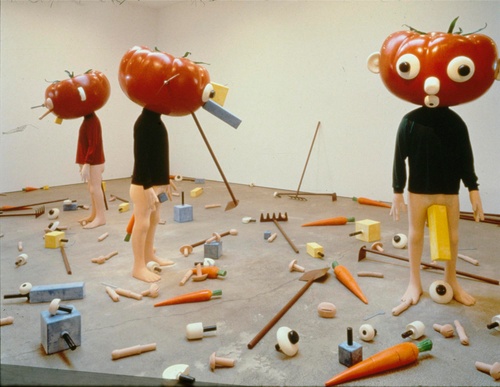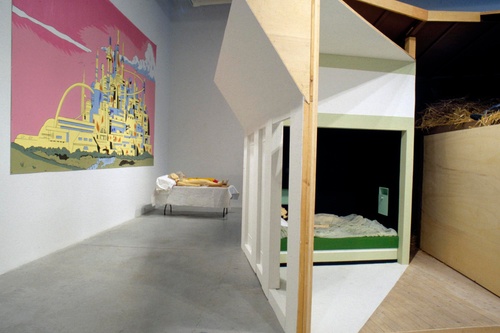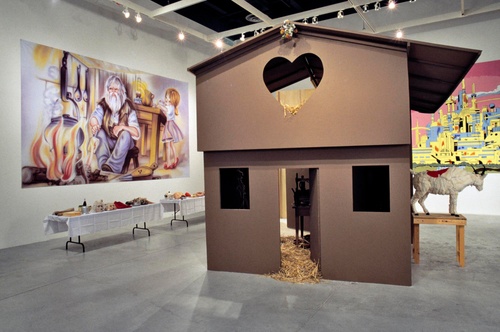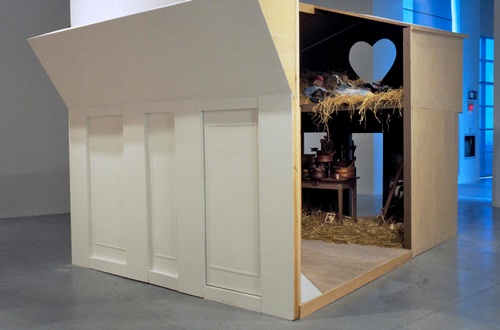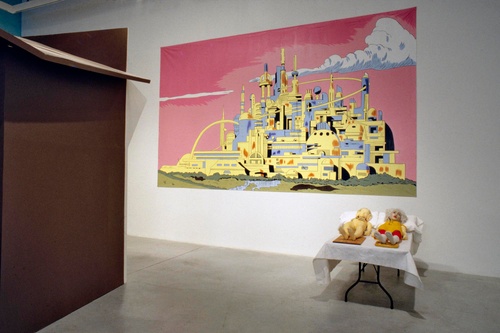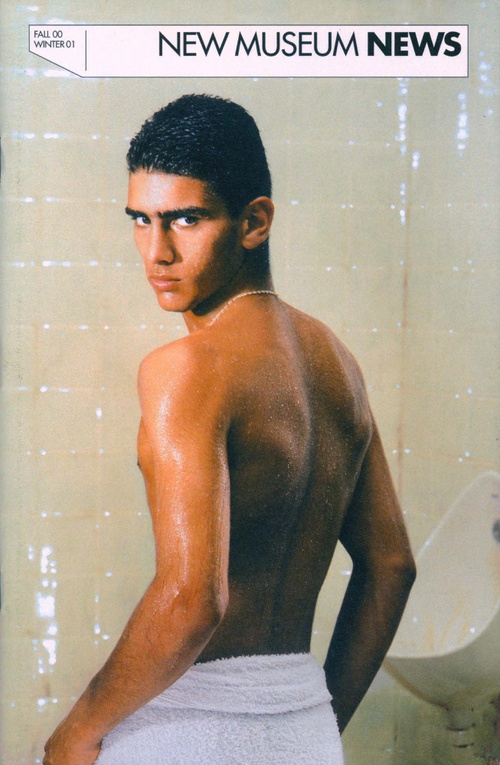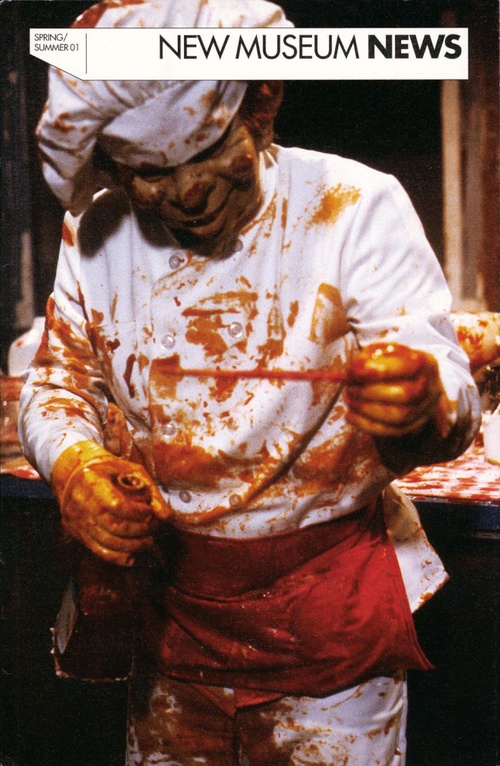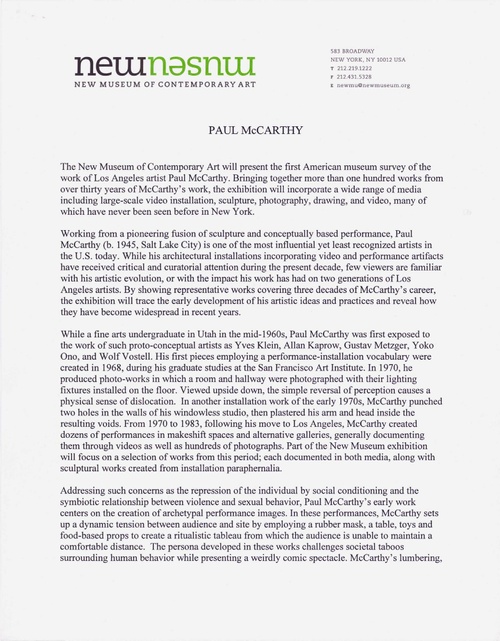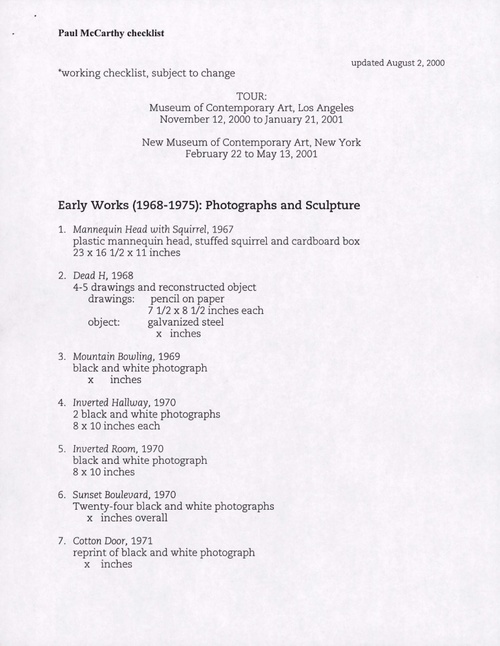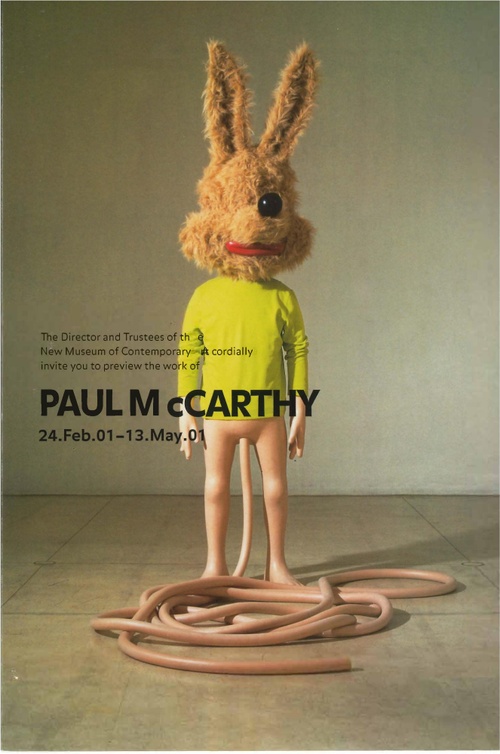Paul McCarthy
Paul McCarthy
Paul McCarthy’s role as purveyor of difficult truths has made his work shocking and incomprehensible to many viewers. This has put McCarthy in an unusual position – he is a well-known mid-career artist with an evolution that is heavily shrouded in myth and innuendo. As a result, the innovative aspects of his work, as well as its historical roots, have tended to be overlooked.
Initially trained as a painter, McCarthy began experimenting with film in 1967 and produced a large number of photographic works through the late 1960s and early 1970s. Mountain Bowling (1969) begins as a performance-like action in the wild, captured by a nearby camera, revealing a droll naturalism that downplays the obvious physical danger inherent in this pseudo-sport. Many of the works that followed probe the fissure between what the eye perceives and how the brain deduces the “truth” of a disorienting situation. In Inverted Hallway and Inverted Room (both 1970), McCarthy juxtaposes identical views of the same space, one upside down, to give the impression that one space depicted has been constructed with every feature inverted.
The progression of McCarthy’s art from gesture to performance passed first through a period of events or interactions within architectural spaces. Some typical works of this time (1972-1974) deploy the human body like an object or machine; a literal sub-entity compelled to carry out an irrational order to the letter. Plaster Your Head and One Arm into a Wall (1973) centers on an activity that literally merges the artist’s body and the room containing it. The resulting photographs show the artist both “magically” emerging from the wall and trapped in a submissive position on the other side. A very different kind of activity propels Whipping a Wall with Paint (1974), which took place in a storefront space transformed by McCarthy’s frenetic behavior into a three-dimensional action-painting cliché. A related piece, Penis Painting (1973), is the first of McCarthy’s works to focus attention on his genitalia as the locus for acting out the masculine prerogative.
McCarthy’s most concentrated period of performance work covers roughly ten years, beginning with 1974’s Meat Cake. In the dozens of performances staged during this period, McCarthy steadily moved away from the objectified inclusion of his physical self to embrace the spectacle of the body as a repository of society’s most closely guarded taboos. As part of this process, McCarthy developed a narrow range of stage personalities, each serving as a kind of distorting mirror in which the inability to conform to social mores produces a clash between the character’s free-flowing imagination and his actual behavior.
The turning point between his more ephemeral performances and the installations is the 1984 work The Trunks. An accumulation of props from 1972 through 1984, this work served to capture certain essential characteristics of his performances in a relatively permanent state, while opening up possibilities for making objects as effective a tool for expressing his ideas as events and images had been before.
The world at large became aware of Paul McCarthy through the Museum of Contemporary Art, Los Angeles, 1992 exhibition, Helter Skelter. McCarthy’s contribution was a full-scale staged environment titled The Garden. The work discloses its “secret” once the viewer comes into close proximity to the raised grove of trees and rocks, where life-sized, mechanized father and son figures violently attempt to copulate with a tree and a patch of ground. Both humorous and frightening discoveries, the figures become archetypes for a primal violence that is uniquely American. Left by themselves in a wilderness, they defile both the landscape and the sacred bond between generations. Not only has McCarthy ventured into the highly charged terrain of interfamilial sexuality in this work, he also makes us uncomfortably aware of our own corporeal relationship to the figures.
A kind of sequel to The Garden, Cultural Gothic (1992) extends the father-son theme into a psychic territory that seizes on bestiality as a metaphor for hidden family violence. The jerky, mechanized movements of the figures, while emphasizing their absence of realism, actually work to heighten the quality of horror transmitted by the actions. Bossy Burger (1991), the first installation that relocates McCarthy’s performance methods inside the place where the action occurs, is constructed using cast-off sets from a defunct television series. Encountered as a seedy, open-ended structure in which decomposing carnage mutely testifies to a strangely comic violence, the set displays a pair of video monitors on which the artist, wearing a chef’s uniform, clown shoes, and a mask of the grinning face of Mad Magazine icon Alfred E. Neuman, prepares to demonstrate how to cook a meal. As the muttering, bumbling persona gradually turns the kitchen into the state in which we have found it, the most surreal aspect of Bossy Burger stems from the chef’s manically self-absorbed pleasure in the chaos he creates.
Many of McCarthy’s works of the last decade have restaged childhood myths within built environments to explore the vast gap between the saccharine Disneyfied view of the world promoted by a consumerist society, and the inner turmoil that is an unfortunate reality for a great many people. The double-decker setting of Heidi (1992, in collaboration with Mike Kelley), a generic Swiss cottage on one side and Adolph Loos’s American Bar in Vienna on the other, does not prepare us for the grisly presence of the attendant dolls, lying alongside each other in bed like hastily arranged corpses. The box-and-tunnel structure of Pinocchio Pipenose Householddilemma (1994), enables a transfer of identity from masked actor to life-sized Pinocchio doll to take place in both symbolic and real space. Spatial concerns are not limited to McCarthy’s installations, either. In non-kinetic works, such as Spaghetti Man (1993), the doll-like figure’s pathetic face and comically elongated penis have been calculated to create an uncomfortable proximity to the viewer, who is literally forced to choose between looking at the pathetic or the grotesque.
With the gradual introduction of new possibilities for linking spatial and behavioral concerns, McCarthy’s work of the past few years has achieved a convincing grasp of psychic trauma. There is no shortage of artists willing to peer closely at the dark underside of the American psyche, but McCarthy does so from a unique perspective; he does not separate himself from what he perceives, nor does he permit the viewer to keep a safe distance. The images and texts that suffuse his art are drawn directly from both media-generated ideals of behavior and the depths of his own psyche; his characters and settings are a universal repository of the fears, obsessions, and conflicts that face the human species at an evolutionary crossroads.
-Dan Cameron, Senior Curator
The exhibition is accompanied by a fully illustrated, 264-pg. catalog co-published with Cantz Editions. It includes essays by Lisa Phillips, Dan Cameron, Anthony Vidler and Amelia Jones

